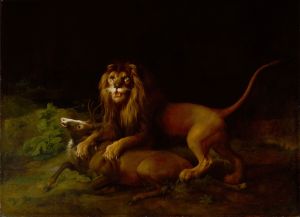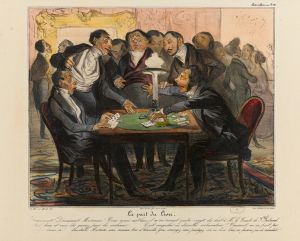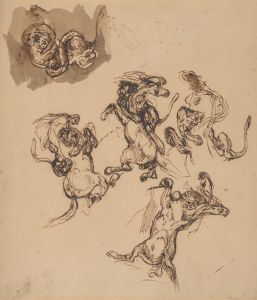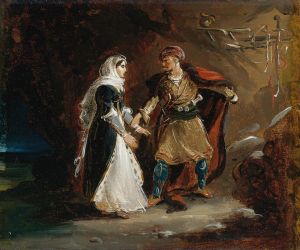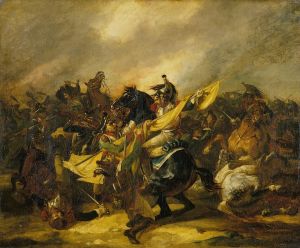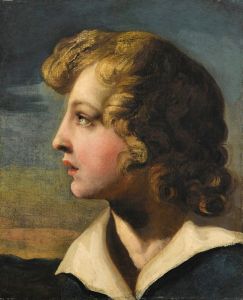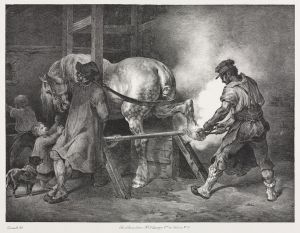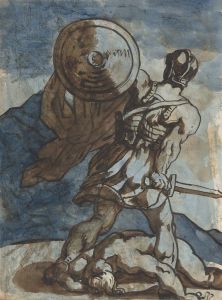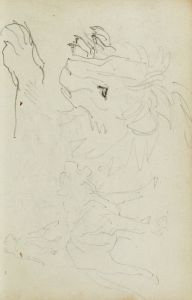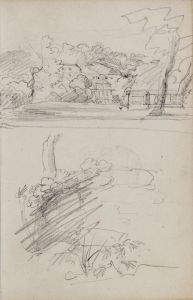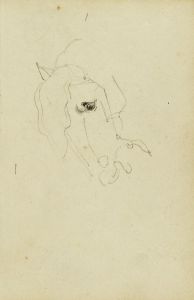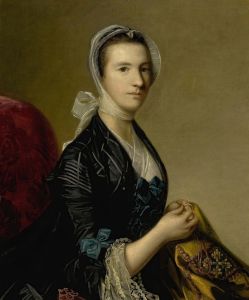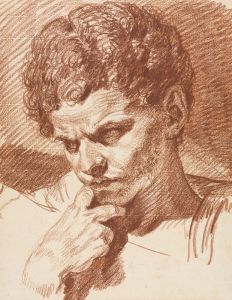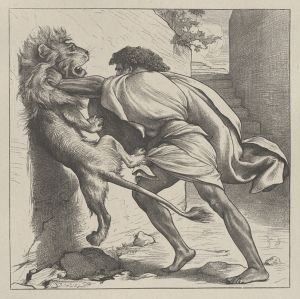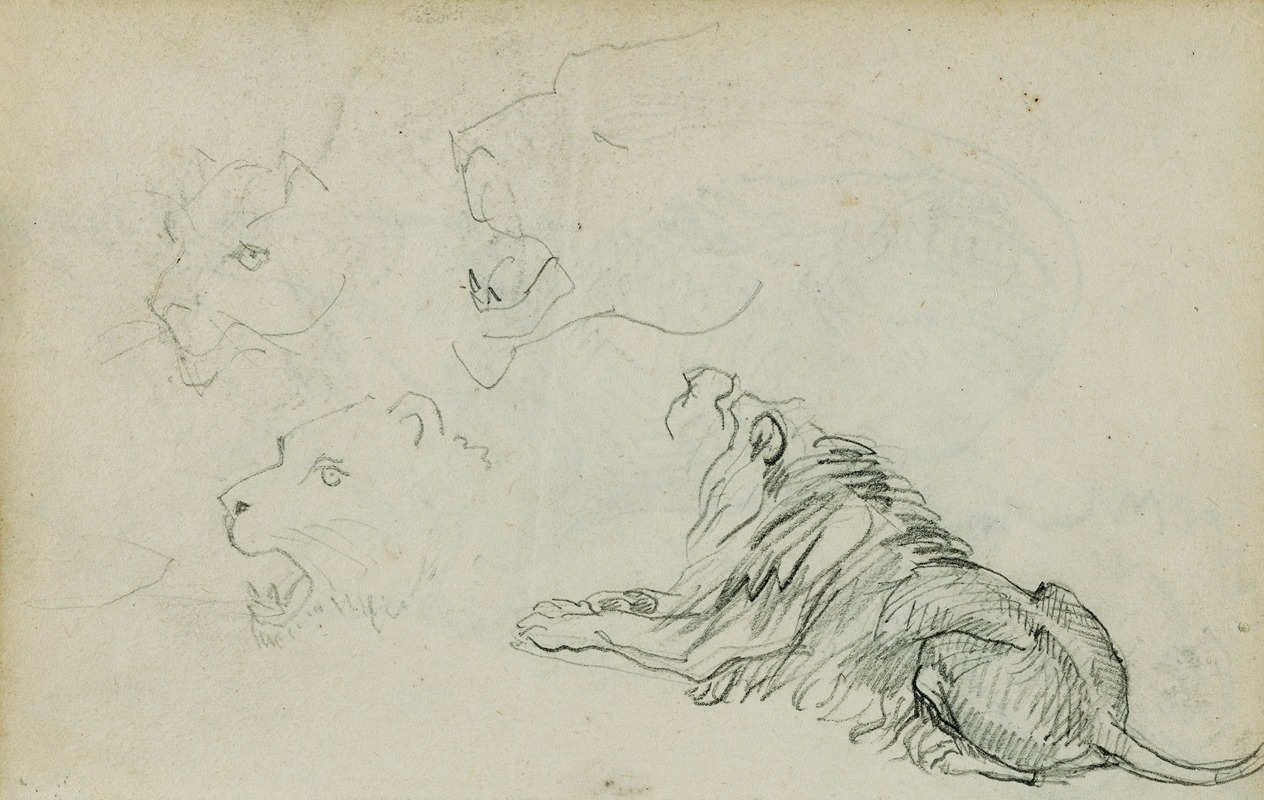
Four lion studies
A hand-painted replica of Théodore Géricault’s masterpiece Four lion studies, meticulously crafted by professional artists to capture the true essence of the original. Each piece is created with museum-quality canvas and rare mineral pigments, carefully painted by experienced artists with delicate brushstrokes and rich, layered colors to perfectly recreate the texture of the original artwork. Unlike machine-printed reproductions, this hand-painted version brings the painting to life, infused with the artist’s emotions and skill in every stroke. Whether for personal collection or home decoration, it instantly elevates the artistic atmosphere of any space.
Théodore Géricault, a prominent French painter and lithographer, is best known for his dramatic and emotive works that played a significant role in the development of the Romantic movement in art. Among his various studies and paintings, "Four Lion Studies" stands out as an exemplary piece showcasing his keen interest in animal anatomy and his exceptional skill in rendering dynamic forms.
"Four Lion Studies" is a drawing that reflects Géricault's fascination with the natural world and his dedication to understanding the anatomy and movement of animals. This work is composed of four separate studies of lions, each capturing different poses and expressions. The drawing demonstrates Géricault's meticulous attention to detail and his ability to convey the power and majesty of these creatures through his art.
Géricault's interest in animal studies was part of a broader trend among artists of his time who sought to explore the natural world with scientific precision. This approach was influenced by the Enlightenment's emphasis on observation and empirical study. Géricault, like many of his contemporaries, spent time studying animals in zoos and menageries, where he could observe their behavior and anatomy firsthand. These studies were crucial for artists who aimed to depict animals with accuracy and vitality in their work.
The "Four Lion Studies" drawing is executed with a combination of media, likely including graphite or charcoal, which Géricault used to achieve a range of tones and textures. The use of light and shadow in the drawing highlights the muscular structure of the lions, emphasizing their strength and grace. Each lion is depicted in a different pose, showcasing Géricault's ability to capture movement and emotion. The dynamic composition of the drawing reflects the influence of earlier masters, such as Peter Paul Rubens, known for his vigorous and lively animal studies.
Géricault's animal studies, including "Four Lion Studies," were not merely academic exercises; they were integral to his artistic practice and contributed to the emotional intensity of his larger works. His ability to convey the essence of his subjects, whether human or animal, set him apart as a leading figure in the Romantic movement. Géricault's work, characterized by its dramatic use of light and shadow and its focus on the sublime and the emotive, had a lasting impact on the art world and influenced subsequent generations of artists.
While "Four Lion Studies" may not be as widely recognized as some of Géricault's other works, such as "The Raft of the Medusa," it remains an important example of his skill and dedication to his craft. The drawing offers insight into Géricault's artistic process and his commitment to capturing the beauty and complexity of the natural world. Through works like "Four Lion Studies," Géricault continues to be celebrated for his contributions to the Romantic movement and his enduring influence on the depiction of animals in art.





